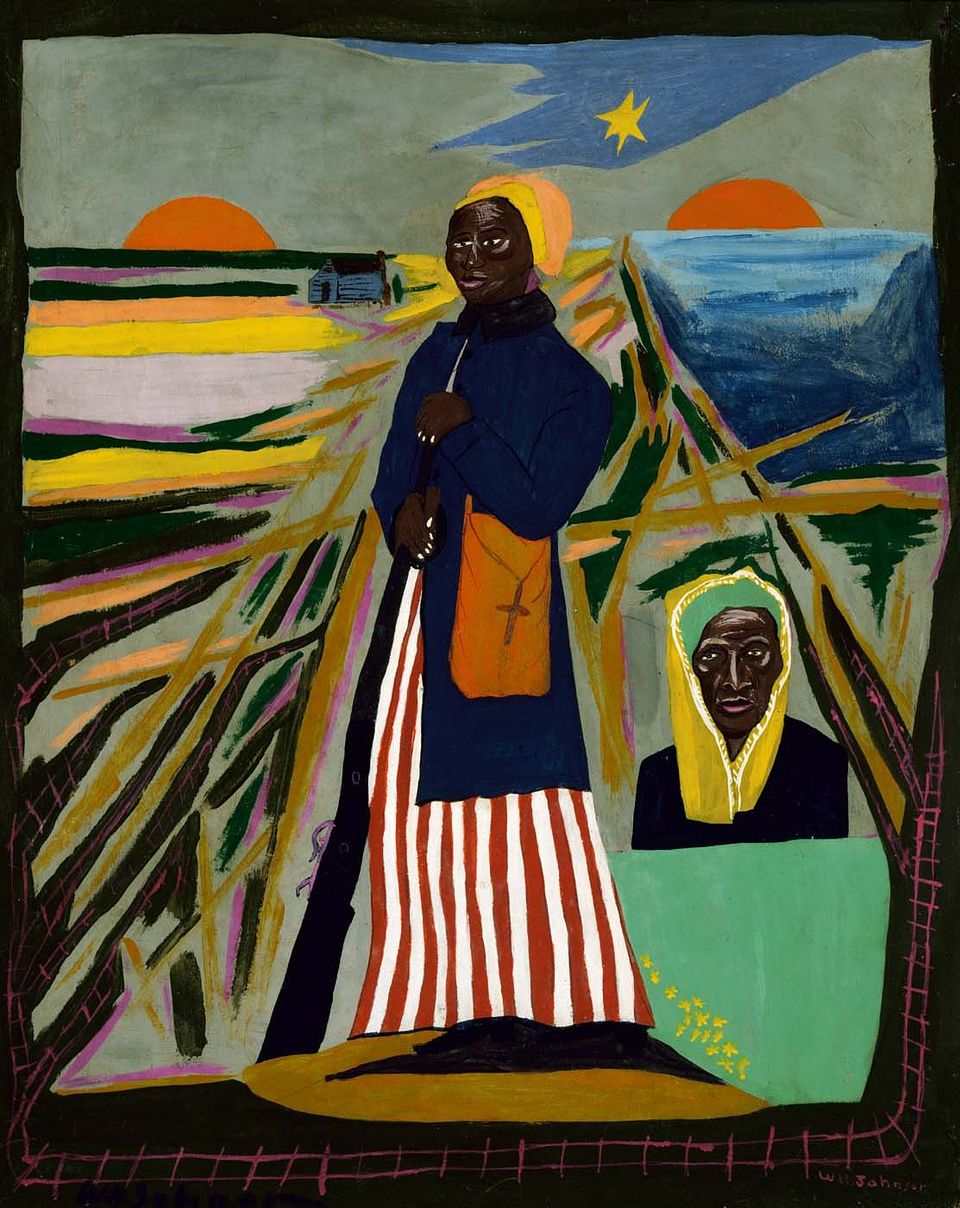Artwork Details
- Title
- Booker T. Washington Legend
- Artist
- Date
- ca. 1944-1945
- Location
- Not on view
- Dimensions
- 32 5⁄8 x 25 1⁄4 in. (82.9 x 64.1 cm.)
- Credit Line
- Gift of the Harmon Foundation
- Mediums
- Mediums Description
- oil on plywood
- Classifications
- Subjects
- Portrait male — Washington, Booker T.
- Occupation — education — student
- African American
- Figure group
- Object Number
- 1967.59.664
Artwork Description
Johnson presents a formally dressed Booker T. Washington (1856--1915) addressing a coeducational class of Black students. He is framed by a blackboard on which a saw, trowel, and hammer represent the building trades. A rake, shovels, and other farm implements attest to Tuskegee's importance as a center for agricultural research. (Washington hired George Washington Carver to run the agriculture program in 1896.) Opposite, an artist's palette, an inkwell, and musical instruments symbolize the liberal arts.
For Washington, education was crucial to the economic and social advancement of African Americans. In his autobiography Up from Slavery, he told of his early years on a Virginia tobacco plantation and his adolescence working in a West Virginia coal mine. Only after his four-to-nine a.m. shift was over was he allowed to go to school. Determined to get a formal education, Washington walked five hundred miles to Hampton Institute (now Hampton University), where he proved to be a star student. Seven years later, he was invited to teach at Hampton. In 1881 he launched the Tuskegee Normal and Agricultural Institute in Alabama.














